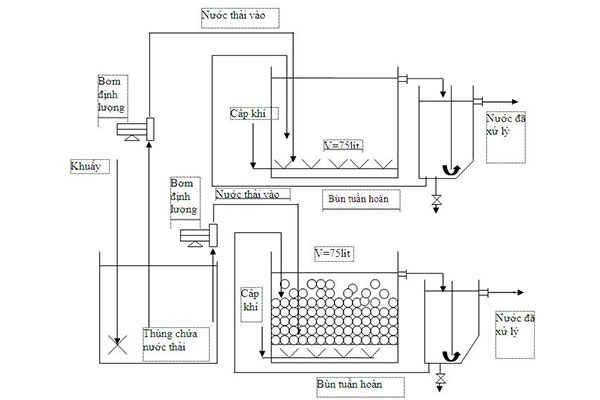Many advanced technologies have been researched and applied as the demand for wastewater treatment becomes increasingly urgent to protect the environment. Among them, the electrochemical method stands out due to its effectiveness in treating complex wastewater, especially those with high concentrations of pollutants or difficult-to-degrade substances. By combining physicochemical and electrochemical reactions, this technology not only removes impurities thoroughly but also minimizes the use of chemicals, helping to reduce secondary pollution.
The electrochemical method is a physicochemical wastewater treatment technique that uses electric current applied to soluble or insoluble electrodes to remove pollutants. Depending on the treatment goals, this method can be applied in several forms, with the most notable being:

What is electrochemical method in wastewater treatment system?
Electrochemical wastewater treatment combines multiple physicochemical mechanisms across three main stages: electrocoagulation, electrochemical oxidation, and electroflotation. Each stage serves a distinct purpose but works in tandem to thoroughly eliminate pollutants.
This stage uses direct current to dissolve aluminum or iron anodes, forming hydroxide compounds (e.g., Al(OH)₃ or Fe(OH)₃). These act as coagulants to gather suspended solids, oil, and heavy metals into easily settled flocs.
After coagulation, water is transferred to the oxidation tank, where electric current generates powerful oxidizing agents such as hydroxyl radicals (•OH) and active chlorine. These break down toxic organic compounds into CO₂, water, and harmless salts.
In this stage, electrolysis produces tiny oxygen (at the anode) and hydrogen (at the cathode) bubbles. These fine bubbles adhere to remaining flocs, oil, and impurities, lifting them to the surface for easy removal.

Electrochemical methods are widely applied in wastewater treatment systems
The electrochemical method is a modern wastewater treatment solution that offers numerous advantages over traditional technologies. Thanks to its ability to rapidly and effectively remove pollutants, reduce sludge generation, and ensure high water quality, this technology is increasingly being applied across various industries. Implementing electrochemical methods not only helps businesses meet environmental standards but also contributes to ecosystem protection and sustainable development.